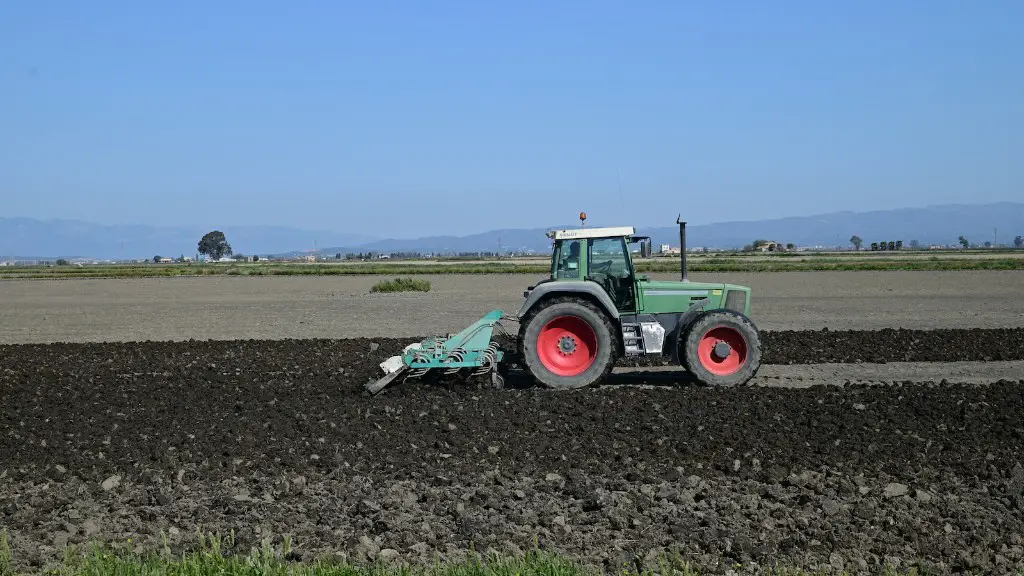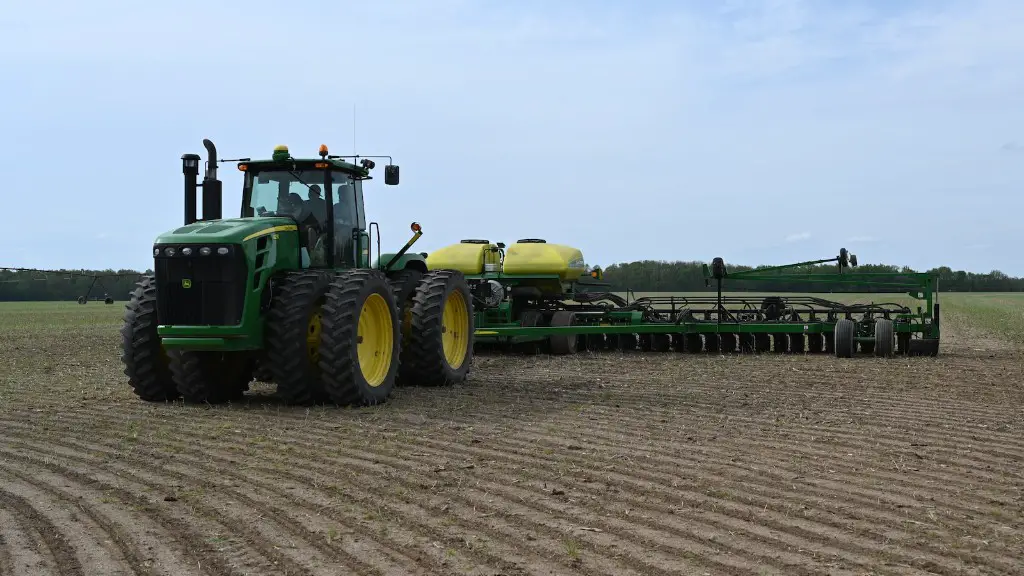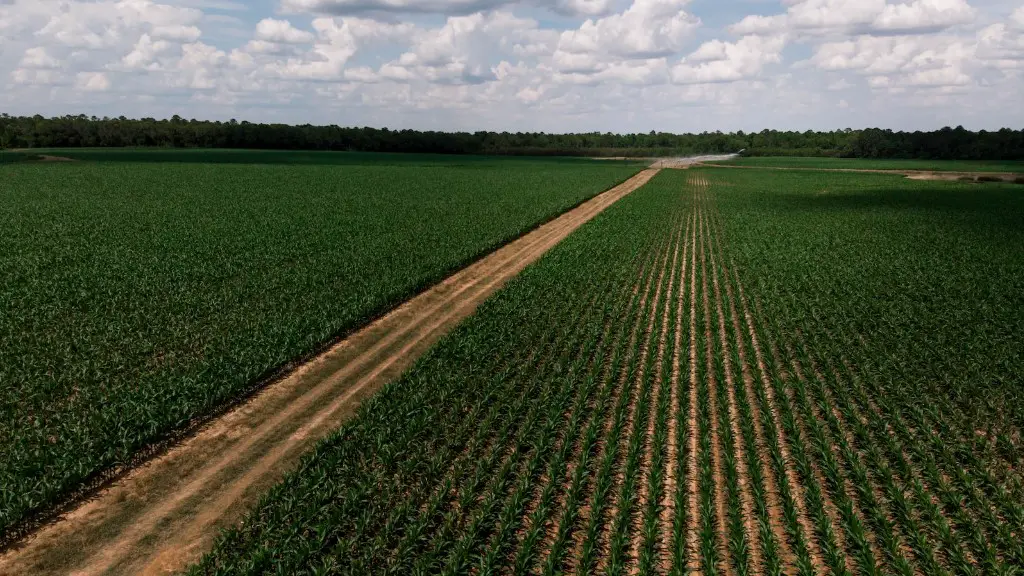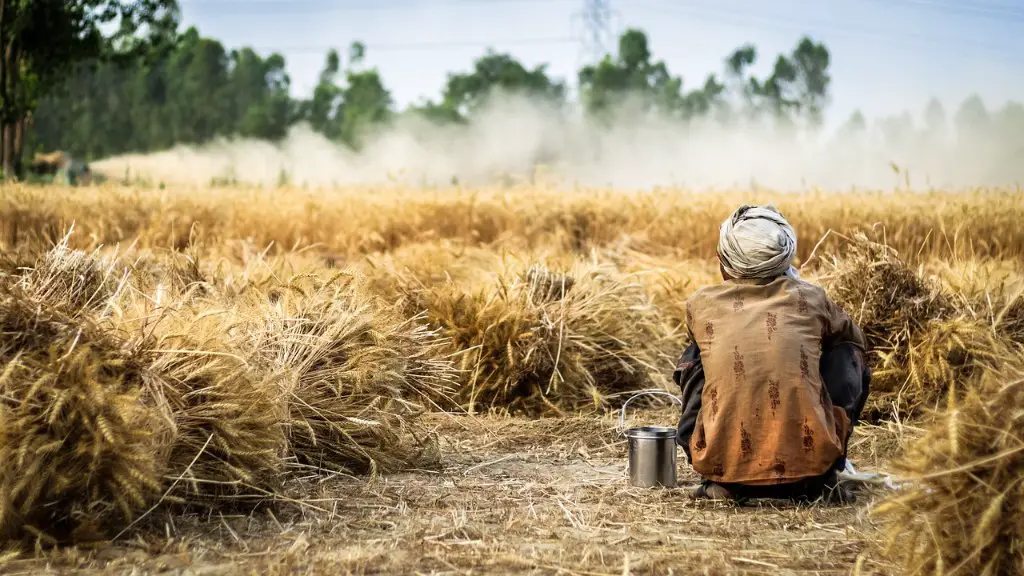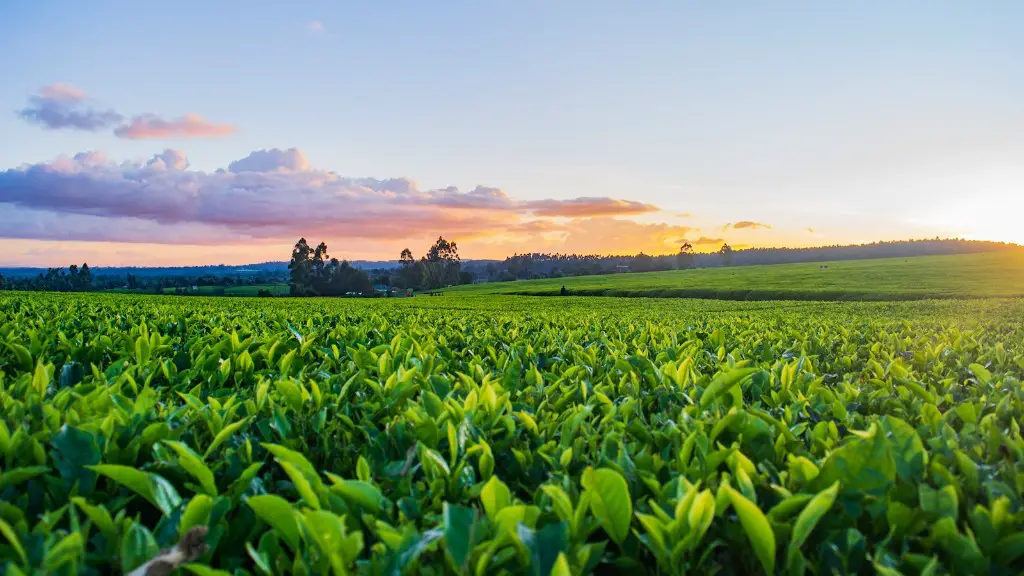Heat waves are defined as periods of abnormally hot weather lasting for several days. They can have devastating effects on agriculture, leading to widespread crop failure and losses in livestock. The main cause of heat waves is atmospheric stagnation, which occurs when a large mass of warm air becomes trapped near the surface of the earth. This can happen during the summer months when the jet stream moves northward, carrying warm air with it. Other contributing factors include high humidity, clear skies, and light winds.
Heat waves have a number of negative effects on crops and livestock. For crops, heat waves can cause premature ripening, wilting, and flower drop. High temperatures can also lead to increased water loss, which can lead to drought conditions. Heat waves can also cause animals to suffer from heat stress, which can lead to dehydration, heat exhaustion, and death.
In recent years, heat waves have become more common and more intense due to climate change. As the atmosphere warms, the chances of heat waves occurring increase. This is of particular concern for agriculture, as heat waves are expected to become more frequent and more intense in the future. Farmers will need to adapt their management practices in order to cope with the impacts of heat waves.
Heat waves can have a devastating effect on crops and agriculture. High temperatures can cause plants to wilt, dry out, and even die. Heat waves can also increase the spread of pests and diseases, which can further damage crops. In extreme cases, heat waves can lead to wildfires, which can destroy entire farms.
How does hot weather affect agriculture?
There is a lot of evidence that extreme heat exposure can stress plants, stunt development, and cause plant mortality. This often results in reduced quality and lower yield in agricultural crops. This can have a cascading effect on global economies and heighten concerns around food availability.
Heat waves can have a significant impact on the environment around crops. The most direct impact is through drought and wildfire, both of which can damage or destroy crops. Heat waves can also lead to soil moisture being taken up via evaporation, leaving little to no moisture for crops to use. This can have a devastating effect on crop yields and can lead to widespread food shortages.
Why are heat waves bad for plants
Extreme heat stress can cause a reduction in plant stomatal conductance, which reduces plant transpiration rate, causing reductions in plant productivity and yield. Even in the presence of adequate soil moisture, extreme heat stress can lead to significant reductions in plant growth and yield. In order to avoid these negative effects, it is important to provide plants with adequate water and shade during periods of extreme heat.
It is important to be aware of the potential impacts of extreme weather events on crop production. Reduced grain and forage quality can reduce the ability of pasture and rangeland to support grazing livestock. More extreme temperature and precipitation can prevent crops from growing. Extreme events, especially floods and droughts, can harm crops and reduce yields.
How does heat stress affect farmers?
In recent years, high heat and humidity have created dangerous conditions for farmers, livestock, and crops. A recent report by the Union of Concerned Scientists found that outdoor workers, and particularly farmworkers, are 20 times more likely to die of heat-related illnesses than other workers.
Farmers must take extra care to protect themselves and their workers during these conditions. Some ways to do so include scheduling work for cooler hours of the day, providing ample water and shade, and monitoring workers for signs of heat stress.
Livestock also suffer during heat waves, and can become dehydrated and die. Farmers should provide extra water and shade for their animals, and be on the lookout for signs of distress.
Crops can also be damaged by extreme heat and humidity. Farmers may need to irrigate more frequently or take other measures to protect their crops.
Heat waves are becoming more common and more intense due to climate change, so it is important for farmers to be prepared. By taking some simple precautions, they can help to keep themselves, their workers, and their crops safe.
Extreme temperatures, both high and low, can be detrimental to soil-dwelling organisms and plants. Crops, for example, develop slowly at 90°F (32°C), while 140°F (60°C) is the critical temperature because bacteria in the ground can’t survive the heat. In general, extremes of temperature are not conducive to healthy plant growth.
What temp is too hot for plants?
Most plants grow best when the temperature is between 59° and 86°F. When the temperature is above 90°F for long periods of time, it can slow down plant growth and some plants may start to show signs of stress.
The heat-shock response is a molecular pathway that is activated in order to help plants survive short periods of heat stress. This response helps protect cells from damage that can be caused by proteotoxic stress, which is a type of stress that damages proteins. The heat-shock response is something that is found in all organisms, and it is a helpful mechanism for plants to have in order to protect themselves from harm.
Is hot climate good for farming
A warmer climate may bring new pests and diseases which could affect livestock health, resulting in reduced milk, egg and meat production and even fatalities. increased cooling costs for producers would be an additional burden.
Here are 7 heat-tolerant plants that love the sun:
1. Lantana
2. Lemon Verbena
3. Cosmos
4. Marigold
5. Geranium
6. Salvia
7. Sedum
Is 100 Degrees too hot for plants?
When temperatures rise above 90 degrees Fahrenheit, leaves on most plants will begin to wilt. This is because the plant is not able to transpire, or release water, as quickly as it is losing water to the surrounding air. While there are some exceptions to this rule, generally speaking, 90 degrees is too hot for most plants. If temperatures remain high for an extended period of time, the plant will likely die.
Hot soils hamper plant growth by causing shallow-rooted and container plants to dry out. Deeper-growing roots are less affected by soil heat build-up, but mulching the soil surfaces around plants and watering properly is a good idea to stabilize soil temperatures.
How often should I water my garden in 100 degree heat
During hot weather, it is important to water your vegetables at least two to three times a week. Watering the garden deeply is critical in order to encourage deep roots and get away from the hot soil surface.
Summer can be tough on plants, especially during a heat wave. Here are 8 tips to help your plants survive:
1. Promote high humidity. This can be done by misting your plants regularly, or by setting them on a tray of wet pebbles.
2. Water well, and water deeply. Plants need more water in hot weather, so make sure to give them a good soaking.
3. Shade sensitive plants from too much sun. If your plant is wilting in the heat, it may be getting too much sun. Move it to a shadier spot.
4. Keep it cool. Use fans or air conditioners to cool down your home, and your plants will appreciate the cooler temperature.
5. Don’t fertilize during a heat wave. Fertilizer can actually burn plants in hot weather, so it’s best to wait until the weather cools down.
6. Don’t re-pot during a heat wave. Re-potting is a big stressor for plants, so it’s best to wait until the weather cools down.
7. Wait to prune. Pruning can also be a big stressor for plants, so it’s best
Can plants recover from heat stress?
This is a common technique that plants use to conserve water and reduce moisture loss. By partially wilting, they are able to reduce the amount of water lost to evaporation. In most cases, the plants will recover once they are out of the sun or in shade. They may need additional water if they are exposed to intense sun for extended periods of time.
Heat is an important aspect of farm life, with many uses for both livestock and crops. Heat can be used to dry arable crops, warm greenhouses and polytunnels, and provide warmth for livestock. For larger farms that have diversified into other businesses, such as office space or leisure facilities, district heating systems are often installed to provide heat for the entire complex.
Warp Up
Heat waves can have profound effects on agricultural productivity. The most immediate impact is on water resources, as higher temperatures lead to greater evaporation from both the soil and water surfaces. This can quickly lead to drought conditions, as plants suffer from lack of water. Heat waves can also lead to crop failures, as many plants are not able to tolerate sustained high temperatures. In addition, heat waves can lead to increased wildfires, as higher temperatures and dry conditions create ideal conditions for fires to ignite and spread.
Heat waves affect agriculture by causing crop damage and disrupting the pollination process. High temperatures can cause plants to wilt, as well as cause fruit to overheat and become sunburned. In addition, heat waves can interfere with the pollination process by inhibiting the activity of bees and other pollinators.
